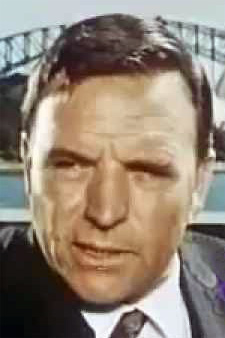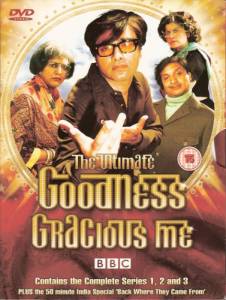My Best Friend may refer to:

Skippy the Bush Kangaroo is an Australian television series created by Australian actor John McCallum, Lionel (Bob) Austin and Lee Robinson produced from 1967 to 1969 about the adventures of a young boy and his highly intelligent pet kangaroo, and the various visitors to the fictional Waratah National Park, filmed in today's Waratah Park and adjoining portions of Ku-ring-gai Chase National Park near Sydney.

Edward Sidney Devereaux, better known professionally as Ed Devereaux, was an Australian actor, director, and scriptwriter who lived in the United Kingdom for many years. He was best known for playing the part of Matt Hammond the head ranger in the Australian television series Skippy the Bush Kangaroo. He was also involved in the series behind the scenes, Devereaux writing the script and directing the episode The Veteran (1969), for which he received much critical acclaim. Devereaux based the story of the episode "Double Trouble" on an idea conceived by his children, wrote the screenplay of "Summer Storm" and the script for "The Mine". He also played the part of Joe in the Australian 1966 film ‘They’re a Weird Mob’. The film was a local success.

Goodness Gracious Me is a BBC sketch comedy show originally aired on BBC Radio 4 from 1996 to 1998 and later televised on BBC Two from 1998 to 2001. The ensemble cast were four British Indian actors, Sanjeev Bhaskar, Kulvinder Ghir, Meera Syal and Nina Wadia. The show explored British Asian culture, and the conflict and integration between traditional Indian culture and modern British life. Some sketches reversed the roles to view the British from an Indian perspective, and others poked fun at Indian and Asian stereotypes. In the television series, most of the white characters were played by Dave Lamb and Fiona Allen; in the radio series those parts were played by the cast themselves. Some of the white characters were also played by Amanda Holden and Emma Kennedy.
Ken James is an Australian actor and celebrity chef. He is most widely known to Australian and international audiences as Sonny's older brother Mark Hammond in the 1960s children's TV show, Skippy. Since his debut in Skippy, James continued to work in the film industry for another 36 years. In December 2009, James was diagnosed with stage three non-Hodgkin lymphoma, which escalated to stage four by 2011. James started chemotherapy, and as of November 2020 the cancer is in recession. James was also actively involved in the Victorian Police Force as an unsworn member from 1993 to 2013.
Acropolis Now was an Australian television sitcom set in a fictional Greek cafe, called the "Acropolis Cafe" in Melbourne that ran for 63 episodes broadcast from 9 August 1989 to 4 November 1992 on the Seven Network. It was created by Nick Giannopoulos, George Kapiniaris and Simon Palomares, who also starred in the series. They were already quite well known for their comedy stage show, Wogs out of Work. The title is a nameplay on the film Apocalypse Now. Each episode was 20 minutes in length and filmed in front of a live audience.
Intruders or The Intruders may refer to:
Hide and seek may refer to:
Eric Stanley Jupp was a British-born musician, composer, arranger and conductor who gained wide popularity in Australia after settling there in the 1960s, hosting a long-running light music TV show and composing for film and TV. He is best remembered for his theme music to the TV series Skippy the Bush Kangaroo.
The Waratah is the genus Telopea, of shrubs native to southeastern Australia.

Skippy: Adventures in Bushtown is an animated children's series created by Yoram Gross, set in a fictionalised Australian town. It is based on the character Skippy from the 1968 live-action series Skippy the Bush Kangaroo.
Yoram Jerzy Gross was a Polish-born, Australian producer of children's and family entertainment.
Edwin Dudley Roberts was an Australian television screenwriter and supervising producer.
Skippy may refer to:

Anthony Frederick Bonner is an Australian television, film and stage actor and singer. Bonner became famous in the 1960s children's television series Skippy the Bush Kangaroo, later moving on to lead roles in the dramas Cop Shop and Skyways.
Reginald Evans was a British-born actor active in Australian radio, theatre, television and cinema from the 1960s, after having started his career in his native England.

The Intruders is a 1969 Australian film directed by Lee Robinson. It is a spin-off of the popular Skippy the Bush Kangaroo TV series.
Joy Cavill was an Australian screenwriter and producer.
The Executives were an Australian pop music band, formed in 1966 and reformed in 1974, consisting of band members Ray Burton, Rhys Clark, Gino Cunico, Brian King, Carol King, Gary King, Keith Leslie and Brian Patterson. They are arguably best known for their top 40 singles "My Aim Is To Please You" (1967), "Sit Down, I Think I Love You" (1967) and "Windy Day" (1968) reaching No. 18, No. 20 and No. 24 respectively on the Australian charts.
Waratah Park is a heritage-listed former Aboriginal land and fauna sanctuary and now Aboriginal title claim at 13 Namba Road, Duffys Forest in the Northern Beaches Council local government area of New South Wales, Australia. It is also known for serving as the fictional Waratah National Park, the filming location for the Australian television series Skippy the Bush Kangaroo, when the area was still undeveloped Crown land. After the series ended, the Crown land remained mostly undeveloped, with the government granting management of the area to a series of operators until August 2014, when the government passed full ownership of the land to the Metropolitan Local Aboriginal Land Council. It was added to the New South Wales State Heritage Register on 27 February 2015.